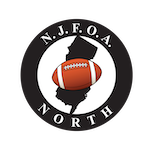“This is an excellent rule change that the majority of game officials and coaches requested and that our NFHS Football Rules Committee members approved unanimously. I believe this change will make the rule clearer for coaches and easier for game officials to administer.”
A notable change to Rule 10 of the NFHS Football Rules Book will eliminate the excessive penalty enforcements for offensive fouls that occur behind the line of scrimmage in high school football.
This change in Rule 10-4 (Basic Spots) is one of seven revisions recommended by the National Federation of State High School Associations (NFHS) Football Rules Committee at its January 8-10 meeting in Indianapolis. All changes were subsequently approved by the NFHS Board of Directors for the 2023 high school football season.
In a move to achieve one of the committee’s fundamental tasks of maintaining a balance between offense and defense, this revision stipulates the basic spot for enforcement of fouls behind the line of scrimmage is the previous spot rather than the spot of the foul. Current penalties for illegal kicking, batting and participation fouls, as well as provisions for offensive fouls occurring in the end zone that may result in a safety, remain intact.
As an example, with the change in Rule 10-4, a team on offense at its own 40-yard line that is called for holding 10 yards behind the line of scrimmage at its own 30-yard line, would be faced with first and 20 from its 30-yard line rather than the almost insurmountable task of first and 30 from its own 20-yard line.
“This is an excellent rule change that the majority of game officials and coaches requested and that our NFHS Football Rules Committee members approved unanimously,” said Richard McWhirter, chair of the NFHS Football Rules Committee and assistant executive director of the Tennessee Secondary School Athletic Association (TSSAA). “I believe this change will make the rule clearer for coaches and easier for game officials to administer.”
In a change that addresses another goal of every NFHS rules committee – risk minimization – additional criteria were approved to help identify players who should be defined as defenseless receivers related to application of unnecessary or excessive contact.
An addition (d) to Rule 2-32-16 states that another example of a defenseless player includes a receiver, as previously defined in the rule, including the person intercepting the pass, who is forcefully contacted by an opponent that is not 1) incidental contact as a result of making a play on the ball, 2) initiated with open hands, or 3) an attempt to tackle by wrapping arm(s) around the receiver.
The committee also approved a clarification to the intentional grounding rule change implemented last year. The change in Rule 7-5-2EXCEPTION permits the exception for intentional grounding to the first and only player to possess the ball after the snap ends.
A revision in Rule 2-29-1 clarifies when a player is inbounds after being out of bounds. While the committee approved additional language for clarification, there is no change to any foul or subsequent penalty provisions, or any rules related to illegal participation or the provisions regarding eligibility to catch a pass.
One change was approved in Rule 1-5-3 regarding player equipment, specifically player towels, which now may contain one manufacturer’s logo and/or one school logo, neither exceeding 2¼ square inches. Towels must be a solid color, but now do not have to be the same color for each player. Towels may not, however, be the color of the ball or penalty flag.
In Rule 7-5 (TABLE) regarding forward pass interference, the word “intentional” was removed, which puts the rule in line with how it is already enforced, which is a 15-yard penalty.






 Welcome to the beginning of a new football season.
Welcome to the beginning of a new football season.